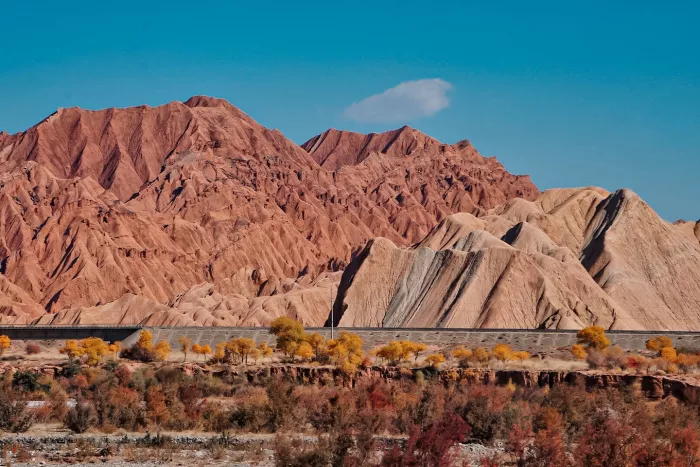On May 25, Xinjiang released its latest Cultural and Tourism Industry Cluster Development Plan (2025-2030). According to the plan, Xinjiang aims to build a trillion-yuan cultural and tourism industry cluster by 2030. In 2025, the region expects to host over 320 million domestic and international tourists, with tourism revenue expected to reach new heights.
The plan outlines a spatial development structure of “one core, three belts, four centers, and multiple nodes” for the cultural and tourism industry cluster. It designates Urumqi as the core engine, with three major cultural and tourism belts running through the Altai, Tianshan, and Kunlun Mountains. The plan also identifies four regional centers in the Ili Kazakh Autonomous Prefecture, Kashgar Region, Altay Region, and Turpan City. These centers will drive the development of the cultural and tourism industry across Xinjiang, with additional important nodes in Changji Hui Autonomous Prefecture, Bayingol Mongol Autonomous Prefecture, Aksu Region, and Hotan Region.
The plan sets clear goals for the next six years: by 2030, the annual number of tourists is expected to exceed 400 million. The combined revenue of the culture, tourism, and sports industries is projected to reach one trillion yuan. Specifically, the culture, tourism, and sports industries are expected to generate 190 billion yuan, 520 billion yuan, and 290 billion yuan, respectively. The added value of culture and tourism-related industries is expected to account for 10% of the region’s GDP. The plan also aims to have over 2,000 large-scale culture and tourism enterprises, including three with main business revenues exceeding 10 billion yuan and ten with revenues over 1 billion yuan. The industry is expected to create employment for over 1.5 million people.
To achieve these goals, the plan proposes six major construction projects: major infrastructure support, business entity cultivation, digital empowerment of cultural and tourism efficiency, publicity and promotion to attract visitors, service optimization and security, and regional cooperation and integration. The plan also outlines measures to strengthen organizational coordination, increase policy support, and deepen reform and innovation.

